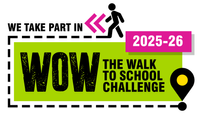Design and technology
To find out more information about our cross curricular approach in STEM, please click below.

At Long Toft Primary school, our design and technology curriculum looks like this:
Intent
At Long Toft Primary School, we aim to provide children with a Design and Technology education that is relevant to our rapidly changing world. We encourage children to work creatively and collaboratively to become effective problem solvers. Within our DT curriculum, children are provided with opportunities to research, explore and investigate, develop their ideas, make a product and evaluate their work. Children will be exposed to a wide range of areas within DT including textiles, food and nutrition and physical computing.
Implementation
Our curriculum incorporates the statutory requirements from the National Curriculum 2014 along with additional experiences and opportunities which meet the learning and development needs of our children. To ensure high standards of teaching and learning in design and technology, we implement a curriculum that is progressive throughout the whole school. High quality lessons are planned with support from our progression of knowledge and skills document. These ensure lessons are suitable to their class’ interests and what they skills children should be taught. Close cross-curricular links should be made where ever possible to support metacognition for our students.
In Key Stage 1, children are taught to design purposeful, functional and appealing products for themselves and their peers based on a design criteria and to evaluate their products against the design criteria. They learn to generate, develop, model and communicate their ideas through talking, drawing templates and through information and communication technology. Children use a range of tools and equipment to perform practical tasks. They select and use a wide range of materials and components, including construction materials, textiles and ingredients, relevant to purpose. Children explore and evaluate a range of existing products, use different mechanisms (levers, wheels etc.) in their products, build structures and adapt for purpose (make stronger etc.). They understand the basic principles of a varied diet, healthy eating and prepare varied dishes.
In Key Stage 2, children are taught to research and develop design criteria to inform the design of innovative, functional, appealing products fit for purpose. They generate, develop, model and communicate their ideas through discussion, sketches, prototypes and computer-aided design. Children select from and use a wider range of tools and equipment to perform tasks accurately. They select and use a wider range of materials and components, including construction materials and textiles, according to their functional properties. Children investigate and analyse a range of existing products, evaluate their ideas and products against their own design criteria. They understand how key events and individuals in design and technology have helped shape the world. Children apply their understanding to reinforce complex structures, understand mechanical and electrical systems and apply their understanding of computer products. Children prepare and cook variety of savoury dishes and understand seasonality and how a variety of ingredients are grown.
Alongside our curriculum provision for design and technology, we also provide all pupils with the opportunity to participate in DT based days within school such as Healthy Eating Week and after school clubs such as cooking.
Impact
Through the study of design and technology, children combine practical skills with an understanding of aesthetic, social and environmental issues, as well as following a specific design criterion. This allows them to reflect on and evaluate present and past design and technology, its uses and its impact. Overall, this supports our children to develop skills and attributes that they can use beyond school and into adulthood.









